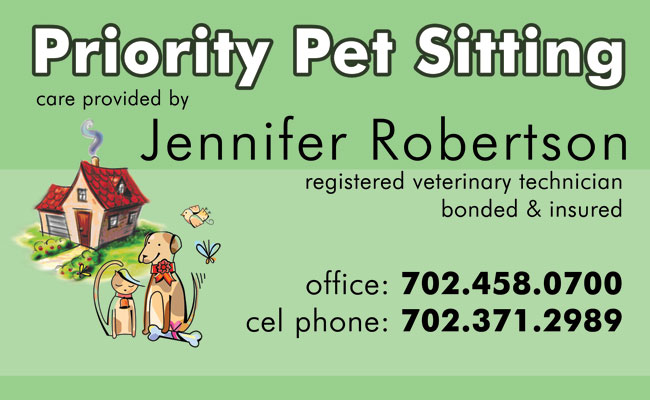We're not the only ones getting swine flu.
The H1N1 flu, a pandemic in humans, was diagnosed in an Iowa cat this week, and he's not the only domestic animal to come down with swine flu. A pet ferret in Oregon was found to have H1N1 last month after being exposed to ill humans, tests by the U.S. Department of Agriculture found. The virus has also been found in pigs and birds, according to the American Veterinary Medical Association.
But don't quarantine your pets just yet.
Dr. Ann Garvey, public health veterinarian for the Iowa Department of Public Health, cautioned that it is difficult to draw conclusions from the Iowa case because it is the first time a cat has been diagnosed with H1N1. But so far, she said, the virus appears to have spread from sick people to animals or between people, with no documented cases of the virus spreading from pets to humans. The Iowa cat, for example, was an indoor cat that became ill after two of the three people he lived with had flu-like illnesses.
Health experts do not yet know whether a cat that contracts the H1N1 virus can spread it to another cat.
"Far and away, this virus is absolutely spreading person to person," Garvey said.
Garvey urged pet owners to take a "common-sense approach" to keeping their animals safe from illness.
"If you're sick, keep in mind the same things that you would do to protect your family members, and consider them when you're dealing with your animals as well," she said.
Dr. Diana Lafer, a veterinarian at Cats Limited Veterinary Hospital in West Hartford, said the significance of the first feline H1N1 case is not yet clear.
"Just because they find a virus in an animal doesn't necessarily mean that that virus is then going to be passed to someone else," she said.
Lafer was anticipating a slew of phone calls from cat owners. Her advice?
"You do what you do with anything else, which is you wash your hands really well and you don't pet the cat and put your finger in your eye. The same way you prevent disease spread from person to person," she said.
Jumping Species
Many species can get flu, and most flu strains tend to exist within a particular species. But the virus can also jump between species.
The canine influenza virus that has been found in dogs since 2004, for example, appears to stem from a form of flu long found in horses. According to the federal Centers for Disease Control and Prevention, the equine virus has now adapted to spread from dog to dog.
An animal with a flu virus can transmit the illness to other animals — in the same species or otherwise — if they are in close proximity, said Dr. Michael Cappello, an infectious diseases specialist and professor of pediatrics and public health at the Yale School of Medicine.
"You need to have some clear direct contact for that initial transmission to occur," he said.
Cappello said the Iowa cat's case underscores a global concern about the potential for viruses that circulate in animals to jump to humans, particularly in parts of the world where humans have close contact with animals and the public health infrastructure may not be adequate to handle an outbreak.
"Those viruses that are circulating, say, in animal populations may be viruses against which humans have relatively little prior exposure and hence little prior immunity, and so that can be a very dangerous phenomenon," he said.
Many of the avian flu cases in humans that prompted worldwide concern in recent years occurred in people who lived in close contact with birds, such as those raising chickens, Cappello said.
In the U.S., people don't live in such close contact with animals, and the risk that an individual house pet or person would get a flu virus from another species is probably very low, he said.
"The likelihood that the next great epidemic is going to occur in your living room or backyard is unlikely," Cappello said. "It's more on the global scale that you think about these things developing in parts of the world where people are living very closely in touch with animals, and that's a broader public health question."
Michael San Filippo, a spokesman for the American Veterinary Medical Association, said the fact that one cat has gotten the H1N1 virus should not cause alarm.
"Cat owners shouldn't be overly worried about this," he said.
The Cat's Tale
The 13-year-old cat was showing signs of malaise. He wasn't eating or drinking, and he wasn't very active.
So his owner took the cat to Lloyd Veterinary Medical Center at Iowa State University's College of Veterinary Medicine in Ames on Oct. 27. Dr. Albert Jergens, a professor at the veterinary school, determined that the cat had a respiratory disease. A sample he took from the cat showed that the disease was a virus, said Brett Sponseller, a professor at the veterinary college who was involved in diagnosing the cat.
Sponseller said the recent flu-like illness in the cat's household suggested the possibility that it was flu. A test determined that the cat had influenza.
Two more tests at the veterinary college indicated that it was H1N1, a strain that had so far not been seen in felines.
Final confirmation came Monday from a national lab in Ames: It was H1N1.
The cat, whose name was not released, received care for his symptoms, Sponseller said. He was dehydrated, so he got fluids, and he was put on antibiotics for potential bacterial infections that could develop. He is now doing well, said Sponseller, who described the cat as having a "very nice disposition."
"He means the world to his owner and family," Sponseller said.
Like other experts, Sponseller recommended using the same practices to avoid spreading flu around cats as around people, methods like covering coughs and washing hands. If there are multiple cats in a household and one appears to have flu, he said, it would be ideal to isolate the sick cat in a single room.
Source: The Hartford Curant Nov 5 2009
 Services for your Pet
Services for your Pet









